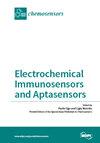Conducting Polymers in Amperometric Sensors: A State of the Art over the Last 15 Years with a Focus on Polypyrrole-, Polythiophene-, and Poly(3,4-ethylenedioxythiophene)-Based Materials
IF 3.7
3区 工程技术
Q2 CHEMISTRY, ANALYTICAL
引用次数: 0
Abstract
Conducting polymers are used in a wide range of applications, especially in the design and development of electrochemical sensors. Their main advantage, in this context, is their ability to efficiently modify an electrode surface using the direct polymerization of a suitable monomer in an electrochemical cell, or by physical coating. Additionally, the conducting polymers can be mixed with further materials (metal nanoparticles, carbonaceous materials) to enhance conductivity and analytical features (linear range, limit of detection, sensitivity, and selectivity). Due to their characteristics, conducting polymer-based amperometric sensors are applied to the determination of different organic and inorganic analytes. A view of recent advances in this field focusing on pyrrole, thiophene, and 3,4-ethylenedioxythiophene as starting materials is reported.安培传感器中的导电聚合物:以聚吡咯、聚噻吩和聚(3,4-亚乙二氧基噻吩)材料为重点的过去 15 年中的技术发展状况
导电聚合物的应用非常广泛,尤其是在电化学传感器的设计和开发方面。在这种情况下,导电聚合物的主要优点是能够在电化学电池中直接聚合合适的单体,或通过物理涂层有效地修饰电极表面。此外,导电聚合物还可与其他材料(金属纳米颗粒、碳质材料)混合,以增强导电性和分析特性(线性范围、检测限、灵敏度和选择性)。由于其特性,基于导电聚合物的安培传感器可用于测定不同的有机和无机分析物。本报告以吡咯、噻吩和 3,4-亚乙二氧基噻吩为起始材料,介绍了这一领域的最新进展。
本文章由计算机程序翻译,如有差异,请以英文原文为准。
求助全文
约1分钟内获得全文
求助全文
来源期刊

Chemosensors
Chemistry-Analytical Chemistry
CiteScore
5.00
自引率
9.50%
发文量
450
审稿时长
11 weeks
期刊介绍:
Chemosensors (ISSN 2227-9040; CODEN: CHEMO9) is an international, scientific, open access journal on the science and technology of chemical sensors published quarterly online by MDPI.
 求助内容:
求助内容: 应助结果提醒方式:
应助结果提醒方式:


